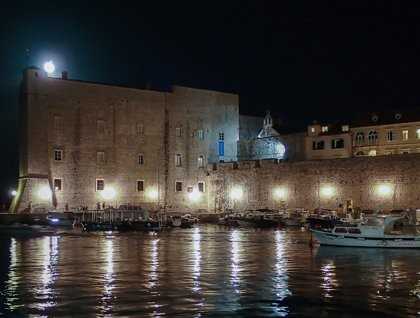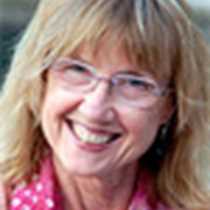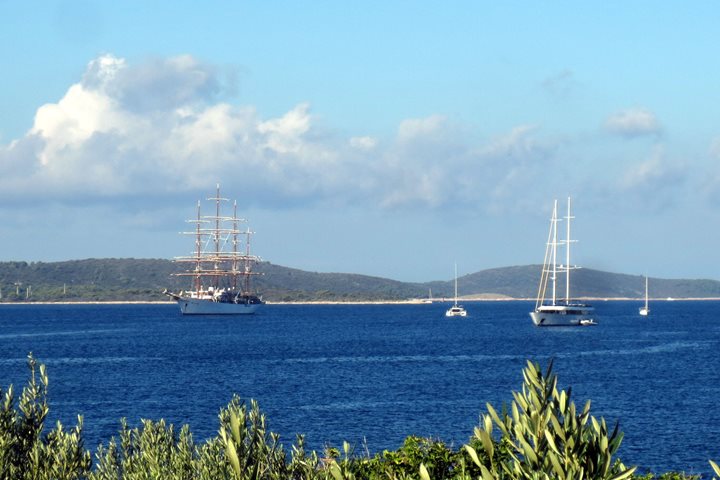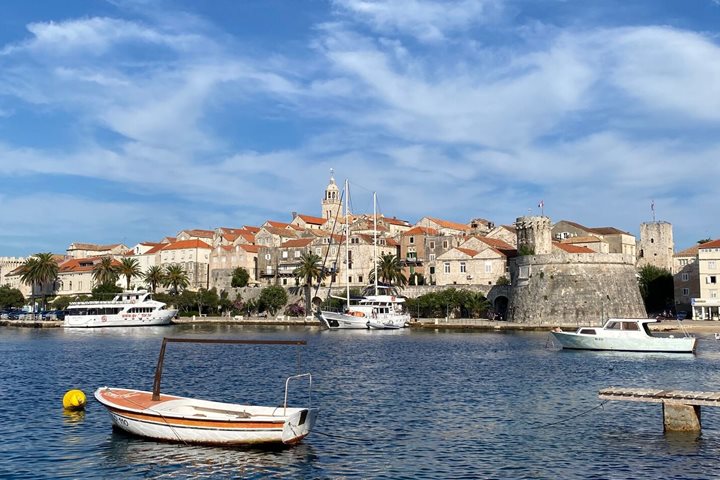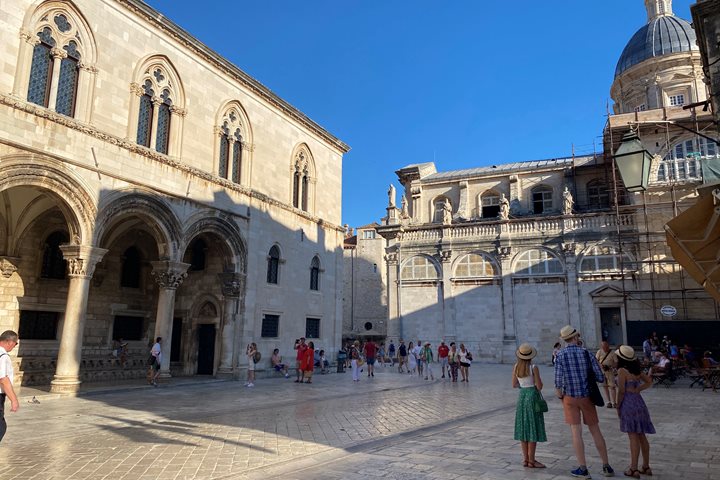The harbor waters sparkled in the early morning sunlight as our tenders approached the Old Town of Dubrovnik, Byron’s “Pearl of the Adriatic.” Our guide this morning was Vlaho, an extremely knowledgeable and personable young man named after the city’s patron Saint Blaise whose image is found throughout the city (the Lion of St. Mark is conspicuously absent). Dubrovnik began as an Illyrian settlement, then Greek; its original name Ragusa probably comes from the Greek word lausa ‘rock’ reflecting its location on a rocky promontory. The layout of Dubrovnik is similar to that of Hvar, that is, a large promenade (in this case formerly a channel) Stradun separates the two parts of the city, the nobility on the promontory from the commoners who lived up the slopes of Mt. Srdj. The name Dubrovnik comes from the Slavic word dubrava ‘oak’ from the oak trees that used to cover these slopes.
The Rector's Palace served as our introduction to the political structure of medieval Dubrovnik, which was heavily influenced by the Venetian model. A new rector was elected every month and sequestered in the palace during his tenure. He was even forbidden to speak with his family and friends the entire month in order to ensure that his decisions were not influenced by any special interests. As a further precaution, rectors were unable to serve a second term until after a two-year period had lapsed, which guaranteed that no one individual had time to accumulate too much power. Dubrovnik’s motto is Libertas, “Liberty,” fitting for a city-state that maintained its independence from 13th to 19th century by negotiating special deals with the Byzantine, Venetian, and Ottoman Empires. It was not until the arrival of Napoleon’s troops in 1808 that Dubrovnik finally surrendered its independence.
We then walked a short distance to the statue of Orlando (or Roland as the French called him) the length of whose forearm served as a standard measurement in the times of the Republic. Across from Orlando, is the old customs building, which houses a memorial to the victims of the siege of Dubrovnik in the early 1990s. In front of the museum, fans of the HBO series “Game of Thrones,” which is filmed here in Dubrovnik, had the opportunity to have their picture taken sitting on the original throne of swords. A few streets down is one of the oldest synagogues in Europe. We then took a side street to see a venerable Dubrovnik institution, the orphanage. Ever practical, the Dubrovnik people recognized that there were always going to be children born out of wedlock and often young mothers were not in a position to keep their child. So a wheel was installed in a window in the wall so that mothers could bring their babies at night, put them on the wheel which they turned around to deliver the baby to the nuns and preserve their anonymity. In hopes that they would one day be reunited with their child, they would break a coin in half and tie one half around the baby’s wrist and keep the other half with them so that they could identify their child. This tradition continued until the Italian occupation during World War II. Our next stop was the Franciscan monastery, home of the third oldest operating pharmacy in Europe. While the current pharmacy is in updated facilities, they still sell some preparations, such as skin lotion, using the traditional recipes and essential oils. The original equipment, such as vials and jars, various measuring devices and books of remedies, is on exhibit in the museum there, along with books, religious art, and relics.
We then had the option of climbing up the famous walls of Dubrovnik with our guides or continuing to explore the city on our own. The vast expanse of new red clay roof tiles bore testament to the damage endured by this city during the siege in 1991 when the former Yugoslav army mercilessly bombed this UNESCO World Heritage site. Some buildings still have the older tiles because brave residents would wait for breaks in the bombing to dash out into the street and collect the few tiles that were intact in order to save them for the restoration they were determined to carry out once hostilities has ceased. As we strolled along the southern walls to our left we observed the charming juxtaposition of medieval buildings decorated with brightly colored laundry hanging out to dry. To our right beckoned the turquoise waters of the Adriatic, exquisitely clean and inviting (indeed, some of us couldn’t wait for the afternoon swim off of the Sea Cloud and chose to dive into the sea from platforms at the base of the walls). After descending the walls, we had time to browse the farmers market with not only fruits and vegetables, but traditional Dalmatian candied citrus peel and nuts, as well as travarica (a grappa-style spirit infused with local herbs). Several venders were selling olive oil and handmade soap from olive oil and fragrant herbs and flowers.
Most of us returned to the Sea Cloud for lunch featuring fresh grilled sea bream from the fish market and a respite from the heat while the streets of Dubrovnik filled up with tourists from the big cruise ships. Tom O’Brien managed to persuade the port authorities to allow us to swim from the ship, which was a delightful prelude to the lecture by historian Tom Heffernan. This was an intriguing yarn of the mishaps, broken promises and betrayals that diverted the Fourth Crusade from their goal of retaking Jerusalem from Saladin to the sack of Constantinople in 1204. Why Hollywood has not made a movie of this enthralling saga remains a mystery.
At 6:00 p.m. we returned to the Dominican Convent courtyard for a private klapa concert (traditional Dalmatian male singing) by the talented and award winning amateur group “Ostrov Konavle.” After the concert some stayed in town for dinner and a night photography workshop with our photo instructor Alberto. Dubrovnik wasn’t as peaceful as it typically is this Friday night. There was a lot of weekend activity, including a bandstand erected in front of Ploče gate and a series of amateur rock and roll, punk, and rap bands. Regardless of one’s musical tastes, the city was gorgeous in the light of the full moon.

